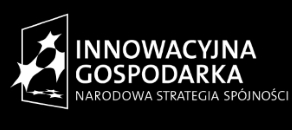A system controlling equipment of modern engine room of a vessel was created in the operational room of machines and auxiliary equipment on the basis of upgraded existing equipment, covering the basic elements of vessel systems:
- air compressors operating at working pressure of 30 and 150 bar,
- vessel vortex pumps – water pumps,
- fuel and oil pumps,
- fuel and oil centrifuges.
The control system operates both autonomously, enabling local control of equipment (local starters) and non-autonomously, i.e. the operator may control the operation of equipment (of its parameters) using a set of interfaces resembling the actual interfaces used by the state of the art vessels.
The constructed system comprises the equipment of the room – laboratory of the actual equipment controlled by new modern electronic control and monitoring systems.
Control systems enable setting of operational parameters of system elements, in a very wide range, for:
- air compressor, by changing its rotational speed,
- water pump, by changing rotational speed of pumps and the pipeline characteristics,
- fuel and oil pump, by changing the rotational speed of pumps and the pipeline characteristics,
- centrifuge, fuel and oil parameters change at their inlet to the centrifuge, by their controlled contamination.
The entire control and monitoring system has been integrated within a single electronic system based on the newest controller types, from the "local" controllers to the control panel, including the trainer station.
The system software also enables creation of exercises which include taking the characteristics of vortex pumps and pipelines, in practice translated into explanations of typical phenomena the mechanics will face during engine room operation on a vessel (cavitation, dry operation of a pump, pump system characteristics, etc.).
The aforementioned solutions enable didactic functions to be executed by the "development" of exercises taking into account both the basis of equipment-related knowledge and operation of equipment under changed conditions, in which the instructor may introduce typical malfunctions occurring during actual operation.
Autonomous stations enable such a configuration change that they meet the requirement of exercises being performed within several thematic groups, replacing and reducing the equivalent number of stations.



